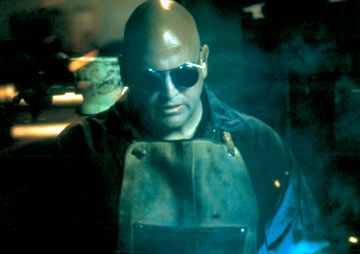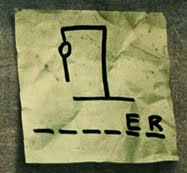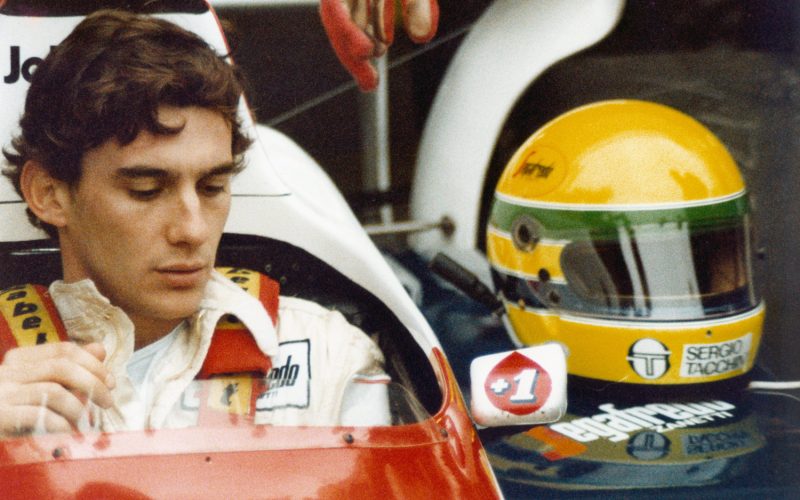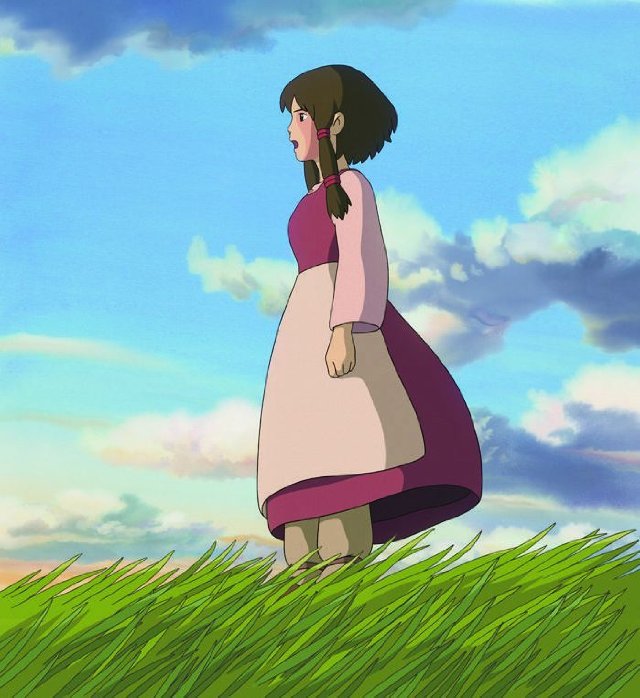
Trevor (played by Christian Bale) is a machinist. He also has insomnia and hasn’t slept for the past year. He is emaciated (probably because he hasn’t opened his refrigerator in that long either–inside is a secret, shhh). Which brings to mind the first question any insurance gecko with a cute, Cockney accent might ask of the shop supervisor: “Mate, why do you have some shattered bloke running the lathe?”
The shop’s dismemberment premiums are going up, you can feel that as soon as the little lizard starts scribbling in his notebook. Early in the film, Trevor’s co-worker Miller (played by veteran limb-contributor Michael Ironside) calls Trevor back to watch him sink his arms deep into the dirty, inner workings a scary piece of machinery. If you know anything about actor Michael Ironside, if you’ve seen any of his more celebrated roles, you know what’s coming next. Personally, I count at least 5 instances where old Ironside ends up with a missing appendage on screen (Total Recall, The Machinist, Starship Troopers, Highlander II, and Guy X).

There’s a lot of heavy-handed foreshadowing and symbolism in this film. Do you like mysteries that challenge audiences to sort out what’s fact or fiction before the final unveiling of some twist ending, but like me are a dimwit when it comes to ferreting out the signposts along the way? If so, then this film is for you!
If, by the time Trevor takes his waitress’s little boy on the Route 666 ride at the amusement park, you haven’t figured out the entire plot, strap on your seat belt and fear not. Pay close attention as your RED sports car cruises past a half-familiar sequence of horror dioramas. I’m not saying you should turn off the TV and go for a walk after your drive, but you could.
Christian Bale can play crazy with the best of them. Sometimes he thinks he’s a vengeful bat, sometimes a POW pilot vacationing in pre-war Laos, sometimes an ex-boxer who’s taken one too many hits to the head. I can’t fault any of the acting performances in this film, nor can I complain about the cinematography or run-time or make-up.
However, from the screenplay’s first moments, it’s made abundantly clear to the viewer that circumstances are not as they appear. The screenplay (or direction, or both) patronizingly takes audiences by the hand and shows them the truth. I’d rather come to the realization that I’m lacking a full understanding of the story’s true nature on my own. I’d rather be that dimwit who can’t figure out what’s going on until the last 10 minutes of a film (or have someone explain it to me after the fact).
Perhaps I’m being overly critical, it’s worth seeing so decide for yourself.
Venue: Netflix streaming
Country: Spain
Language: English
Genre: Mystery, Thriller



